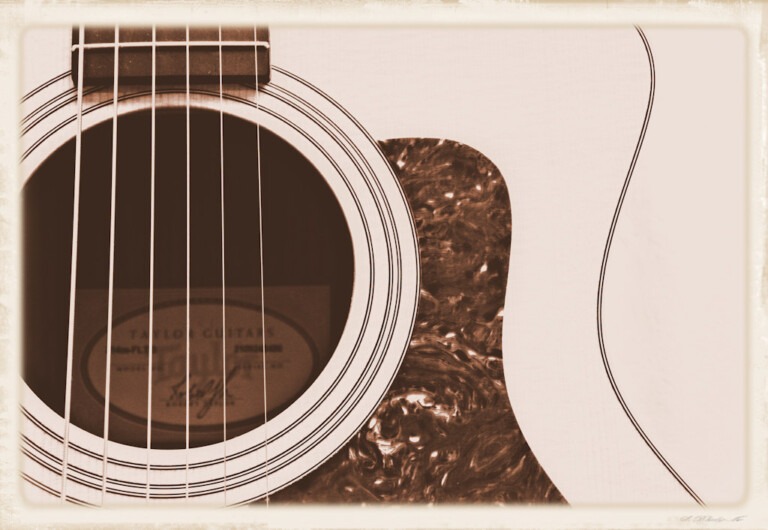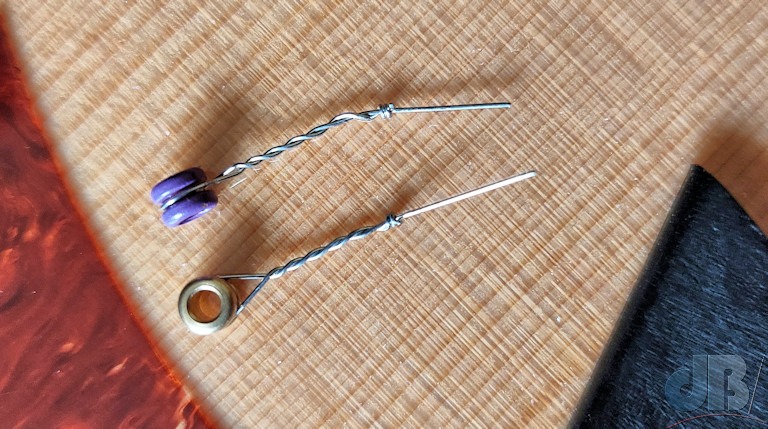Well…last couple of gigs with my Taylor acoustic-semi have suffered with some high-end fizzy distortion. I couldn’t isolate the problem in the live setting and the rest of the band tweaked the amps and the mixing desk and couldn’t cut it. I was just about to take it into town for a checkup at the local guitar shop.

But, I had a brainwave…what if it’s just the connection from the pickup to the output or the on-board pre-amp? So I took the strings off so I could get my hand inside to have a feel around in the guts, and check there wasn’t a loose wire dangling. Well, to my surprise there were no partially disconnected wires as such but there were a couple of loose string ends with their coloured nipples still attached hanging on to the piezo wire that picks up the sound from the guitar and feeds it to the pre-amp.

Surely, this wasn’t the problem, but I kind of knew to my chagrin that it probably was. I whipped them out, restrung the guitar and plugged it back in to have a listen, played it as hard and as loud as possible, none of the high-end fizziness, just the pure, clean, bright, but broad, tones of the Taylor.
So, the lesson here is, when you restring a guitar in the heat of the moment at a gig or wherever and you do the down-and-dirty quick string detachment approach which involves clipping off the ends, do make sure you count the string ends and make sure all six, or twelve, or four, or whatever, are all in the bin and not in the hollows of your guitar making a musical nuisance of themselves.
This does give me an idea for an organic way to modify the sound of an acoustic guitar that has a piezo pickup though. A little device with various metal strings that could be tensioned differently and would resonate while you’re playing and generate undertones and what have you that would add controlled distortion to the sound without having to crank up the gain and risking feedback etc.